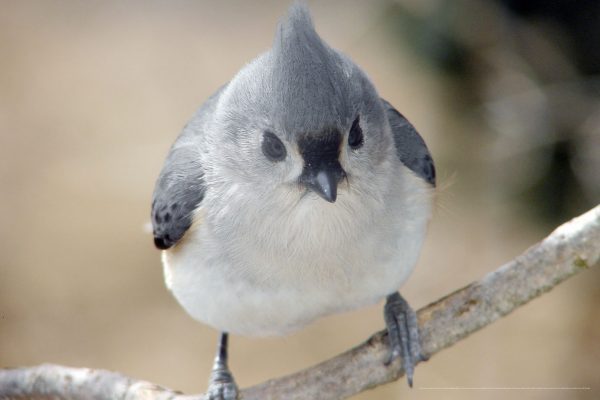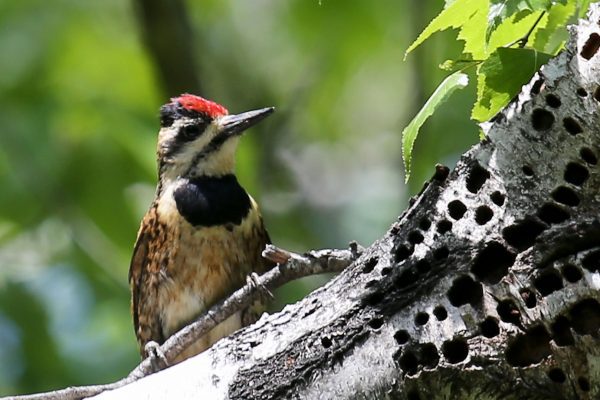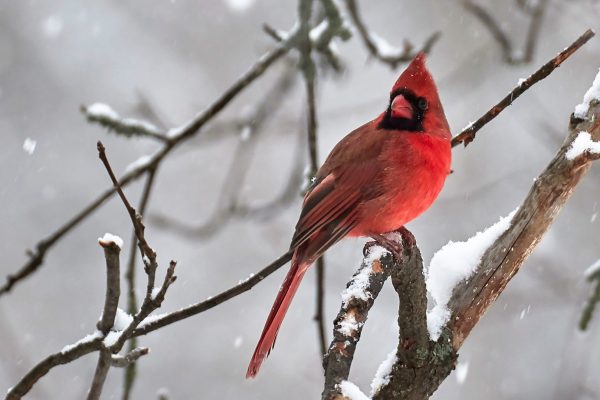
Tufted Titmouse, by Beth Comeau
At least when it comes to the idea that singing birds mean spring has arrived. Ok, go ahead, listen to them. Enjoy them. Celebrate them anyway you wish. Just don’t believe them.
For the last week or so, our neighborhood has erupted in bird song. The cheerful “PEA-ter, PEA-ter, PEA-ter” of a resident Tufted Titmouse has been serenading our morning dog walks. Typically, a Song Sparrow joins the chorus, and several Black-capped Chickadees “fee-bee” here and there. House Finches, never shy to join a party, have been providing their frolicking songs, and a cardinal adds his voice to the mix now and then. We’ve even heard a Yellow-bellied Sapsucker give its “meow” call.
But alas, these birds can deceive.
As we write, it is still just the third week of February—plenty of winter left. So why are these birds singing now?

Yellow-bellied Sapsucker, by David Small
There’s no doubt that they are gearing up for spring, just like we humans. In fact, the same natural features that people enjoy this time of year also can trigger a response in birds. If you’re like us, you’re grateful for every minute of increasing daylight. We’re not opposed to cold, snowy weather (this is Maine, after all). But we’ll take those few gloriously warm days tucked among the frigid temps. This gradual increase in sunlight and uptick in temps (even though temporary) can trigger a build-up of hormones in birds until finally enough is enough, and they burst into song.
This also explains why they seldom sing this time of year for long periods of time. Just bouts of inspiration here and there. Just enough to get our hopes up. The primary reasons birds sing do not include “for the pleasure of humans,” although it’s nice to imagine so. Most notably, birds sing to attract a mate and to establish and defend breeding territories—the land and water that will sustain their family through good times and hard ones, which is why the work of groups like the Natural Resources Council of Maine is so important. Clean air and water, and plenty of land for breeding, wintering, and the travels in between, are as essential for birds and other wildlife as they are for people.

Northern Cardinal, by Pam Wells
These cold winter days, let the songs of birds, however feeble and sporadic, inspire you. They can lift the spirit and ease a worried mind in sudden and unexpected ways, even when the calendar reads February, and a forecast for another 6 to 10 inches of snow is in the forecast. Maybe their voices will prompt you to log onto nrcm.org and audubon.org to see what you can do to help protect birds and their habitat. Contacting your lawmaker about a particular piece of legislation, implementing tips to cut down on waste, creating a bird-friendly yard using native plantings and shrinking the size of your lawn—these are all steps all of us can take to make a difference for birds and the environment in general.
By the way, if you find the whole birds-singing-in-winter thing confusing, don’t feel bad. The sapsucker we mentioned above? It really should be in the southern U.S. and points farther south right now!
—Jeff and Allison Wells










Have a blueberry field near to my home on which has been spotted the “northern sandpiper “ multiple times. The
Piper’s habitat is being threatened by a potentially gravel road. Please advise.
Hi, George,
If this is an Upland Sandpiper, it would be on Maine’s Threatened Species list, in which case we would advise you to contact the Nongame division of the Maine Department of Inland Fisheries and Wildlife.
Thank you for your concern for Maine’s wildlife!
Allison